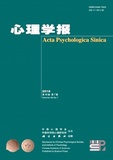Power disparity refers to the differences in the concentration of power among team members. Although the pervasiveness and importance of power disparity have been well recognized, whether power disparity is functional or dysfunctional remains uncertain. Some researchers have suggested that power disparity can improve team performance by facilitating coordination, while others have found that power disparity, which may be perceived as unequal and unfair, can trigger team conflict. In this context, our study aims to reconcile these contrasting perspectives by proposing that procedural justice and team legitimacy are moderators in the relationship between power disparity and team conflict (task conflict and relationship conflict). We propose that when there is a high level of procedural justice, which helps legitimize a team’s power disparity, members are likely to accept their team’s distribution of power and coordinate with each another. However, when there is a low level of procedural justice, which can create the perception that a team’s power disparity is illegitimate, members are likely to view their team’s distribution of power as unequal and unfair. In this case, low-ranking members may show their opposition by competing over power, producing team conflict.
Data were collected from two manufacturing companies in Zhejiang Province. To reduce the potential influence of common method bias, we used a two-wave design with a one-month interval. At Time 1, 450 employees in 90 teams responded to questions about power disparity, procedural justice, team legitimacy, and control variables. At Time 2, 376 employees in the 81 teams that had completed the Time 1 survey responded to questions about task conflict and relationship conflict. The final sample contained 322 employees in 70 teams. We measured individuals’ responses regarding their teams’ power disparity with a round-robin approach (i.e., asking individuals to rate the power of each team member) and calculated the coefficient of variation in those responses. For the purpose of analysis, we aggregated the measures of task conflict, relationship conflict, procedural justice, and team legitimacy to the group level.
The results showed that both procedural justice and team legitimacy moderated the relationship between power disparity and team conflict (task conflict and relationship conflict). When procedural justice was high, power disparity was negatively related to task conflict and relationship conflict, while these relationships became positive when procedural justice was low. In a similar vein, when team legitimacy was high, power disparity was negatively related to task conflict and relationship conflict, but when team legitimacy was low, it was positively related to both kinds of conflict. Moreover, procedural justice was shown to be positively related to team legitimacy. Finally, following the procedures suggested by Grant and Berry (2011), we conducted a mediated moderation analysis to test the integrative model. The results showed that team legitimacy mediated the moderation effect of procedural justice on the relationship between power disparity and team conflict (task conflict and relationship conflict).
Our findings contribute to the literature in two ways. First, the study extends our understanding of the relationship between power disparity and team conflict by testing procedural justice and team legitimacy as moderators. Second, our findings reveal that power disparity can either decrease or increase team conflict when procedural justice (team legitimacy) is high and low, respectively. Our study thereby provides a new approach to the effects of power disparity that integrates the functional and dysfunctional perspectives.




